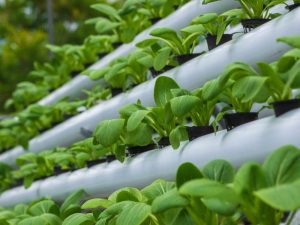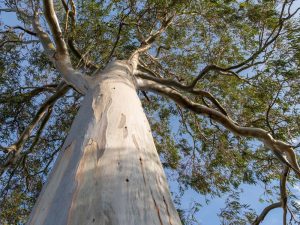Last Updated on June 5, 2024 by teamobn
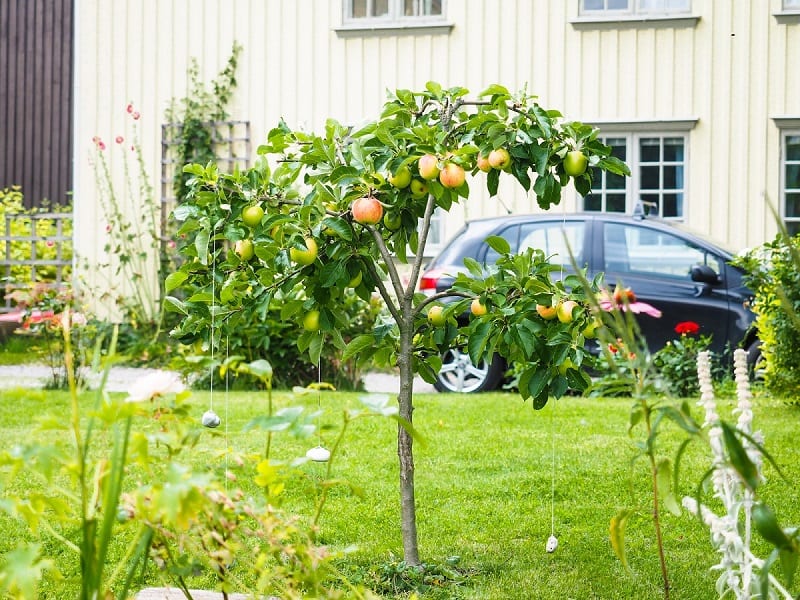
There are few things in this world sweeter than fruit you’ve grown in your own backyard. That’s probably among the reasons why an increasing number of homeowners have turned their backyards into a mini fruit orchard, planting dwarf and semi-dwarf fruit trees.
The backyard orchard makes sense, given the popularity of the local-food movement and recent anxieties over access to fresh food. Nothing is more local and accessible than food grown in your own backyard, after all.
Unlike a trip to the supermarket, a backyard orchard guarantees freshness and slashes energy costs for transportation to zero.
Starting a Mini Fruit Orchard
Contents
Here is how you can go about growing a mini-orchard in your backyard.
Choosing Trees for Your Orchard
One excellent approach to realize your dream of picking fresh fruit straight from your backyard trees is to establish a small fruit orchard. Selecting the appropriate trees will influence not just the flavor of your fruit but also how well they blend into your garden.
Picking the Perfect Fruit Types
The first decision to make while assembling your own mini fruit orchard is what fruits to grow. Do you envision yourself eating luscious apples, savouring fresh cherries, or pressing your own citrus juice? While dwarf or miniature-dwarf trees are common selections for tiny areas, you have other possibilities. You can really choose any kind of fruit that appeals to you. Even bigger heirloom fruit trees can be trained to fit into smaller areas with some clever pruning, increasing your options and enabling you to produce precisely what you prefer.
Choosing the Right Rootstocks
Your mini fruit orchard rootstocks matter just as much as their variety. They are quite important to the growth, health, and flavor of the fruit from your trees. Your little fruit orchard will flourish and your trees will grow robust and healthy if you choose the appropriate rootstock.
Because there are so many different kinds of rootstocks, each with advantages and disadvantages of its own, selecting one can seem complicated. Making a wise decision, though, actually doesn’t need delving deeply into horticultural science. Simplify this process with a brief conversation with the staff at your neighborhood nursery or with assistance from a seasoned gardener. They can guide you in choosing a rootstock that will provide your fruit trees the greatest possible start.
You’re almost there to enjoy your own mini fruit orchard once you make these decisions—just picture plucking a fruit from the tree and eating into it in your own garden!
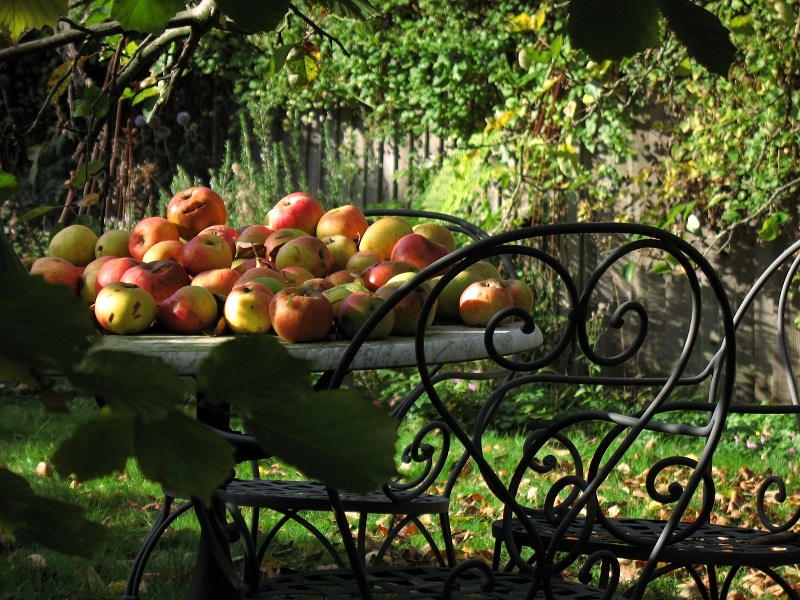
Choosing the Ideal Location for Your Mini Fruit Orchard
Finding the perfect spot for your mini fruit orchard is a crucial step that sets the stage for your future harvests. The right location ensures that your trees grow healthy and produce plenty of fruit.
Essentials for a Prime Orchard Site
When planning your mini fruit orchard, selecting a site with deep, well-draining soil is paramount. This type of soil prevents water from pooling around the roots, which could lead to root rot and other harmful conditions. Additionally, your orchard should have easy access to a water source, making regular watering less of a chore, especially during dry spells.
It’s also vital to choose a location that isn’t prone to frost pockets or high winds. Frost can damage blossoms and young fruits, severely impacting your yield. High winds can stress the trees and even break branches. Ensuring your mini fruit orchard is protected from these elements will help in cultivating a robust and productive garden.
Sunlight and Proximity Considerations
Sunlight is another critical factor. Your mini fruit orchard should receive at least six hours of direct sunlight each day. Sunlight fuels the growth and fruit production of your trees, so a sunny spot is essential for a flourishing orchard.
Experienced gardeners often suggest placing your mini fruit orchard close to your kitchen. This not only makes it convenient to pop outside and grab fresh fruit but also encourages regular care and harvesting. If your orchard is out of sight, it might be out of mind, so placing it near your living area will remind you to tend to it. However, if you choose a more remote part of your property for your mini fruit orchard, make sure you’re committed to making the frequent trips needed to care for and enjoy the fruits of your labor.
Remember, you will have to check on your trees often while they are young.

(Photo: Stephen McCulloch/Flickr)
Configuration and Spacing
Setting up your mini fruit orchard involves thoughtful planning to ensure each tree has enough space to thrive while maximizing your available area. Proper configuration and spacing are key to a successful orchard.
Configuring Your Orchard
The layout of your mini fruit orchard can vary depending on your yard’s shape and size. For a straightforward setup, you might choose a simple, squared-off area in a corner of your garden. This traditional approach is not only easy to manage but also creates a defined space for your orchard.
Alternatively, if space is limited or you want to utilize the periphery of your property, arranging your trees in a hedgerow along the boundary can be an effective solution. This method not only saves space but also can provide privacy and act as a windbreak.
Spacing Your Fruit Trees
In a mini fruit orchard, the spacing between trees does not need to be as wide as in commercial orchards. Since you will be training your trees to remain small, there’s no need for the extensive spacing—sometimes up to 30 feet—that larger trees require. You can plant your trees as close as three feet apart, provided you are committed to regular pruning. Diligent pruning will keep your trees manageable and healthy, allowing them to flourish even in tighter spaces.
Orchard grower Amanda Olsen suggests in an article for Mother Earth Living that when trees are pruned and maintained at a smaller size, they can be treated almost as if they were a single unit. This tandem approach to tree management simplifies the care process and enhances the overall productivity of your mini fruit orchard.
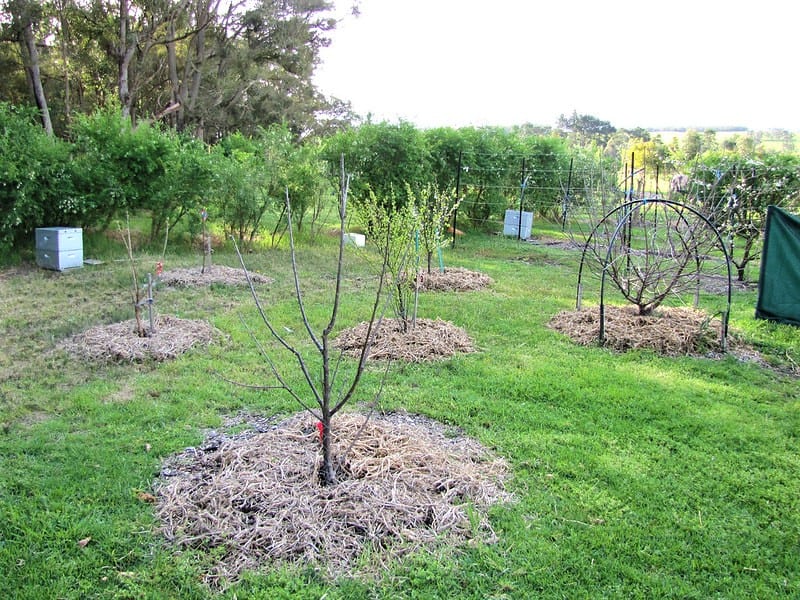
(Photo: Brett and Sue Coulstock/Wikimedia Commons)
Planting Your Fruit Trees
Once you’ve made your decisions about spacing and configuration, you can start planting your trees. Your first planting task is to remove any grass or weeds growing in the area where you want to plant your orchard.
Pick the first tree you want to plant. Dig a hole that is double the size of the tree’s root ball. Then dig into the base of the hole to aerate and loosen the soil. This will allow your fruit tree to grow new roots fast.
Stand the tree in the hole, making sure that the surface of the root ball is at the soil level. Be careful not to bury the tree too deep as it will struggle to survive.

Backfill the hole with the soil you excavated. If you are working with nutrient-poor soil, make sure to work some compost in before you fill back the hole. Use your heel to tamp the soil down.
You will need to stake the tree to prevent damage from strong winds. Drive a wooden stake into the ground at an angle just outside the root ball. This will ensure that the stake does not damage the tree’s roots.

Using a tree tie, fasten the tree to the stake. You can also use an old pair of tights. These are soft. They will not cut into the tree as it grows. Finally, water the tree well and put down a mulch of bark chippings in the bare soil around it.
Repeat this entire planting process for all the trees in your orchard.
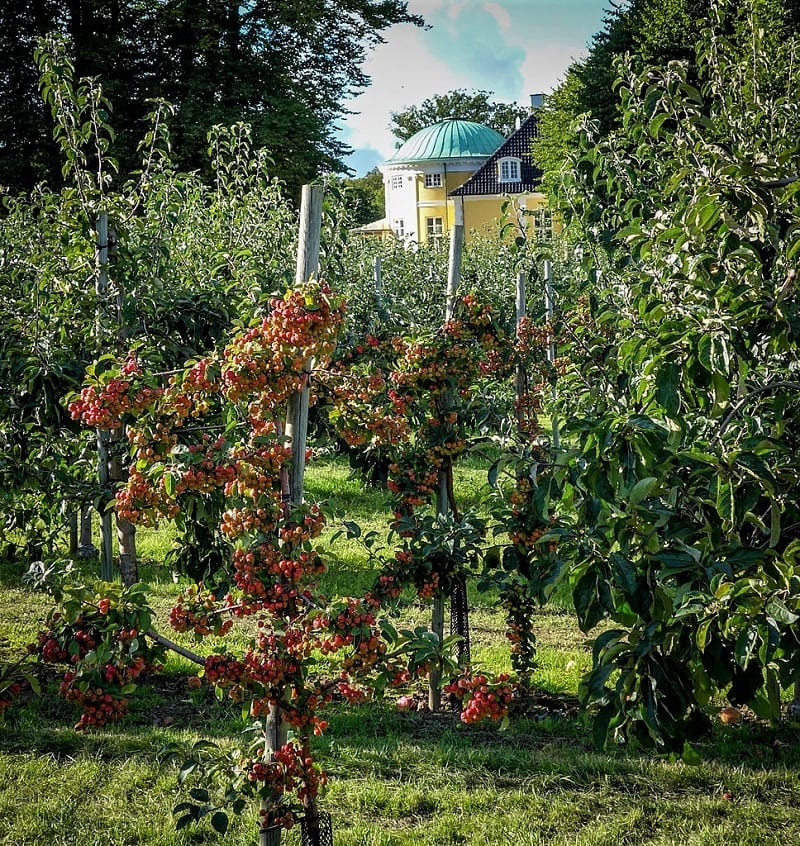
Pruning for Small Size
Pruning a tree for small size can be tricky, especially if you are dealing with a bare-root whip that is already 4 to 5 feet tall.
You should make the first, most drastic cut in late spring, right after the trees are planted. Make a “heading cut,” reducing the main trunk down to about 2 feet.
Make the cut above branches if there are any – or above buds if branches are not yet fully formed. Do not worry, the tree will grow back in time.
This cut will eventually form a scaffold – the main branches that make up the tree – at a low height. A low scaffold will limit the vertical growth of the tree.
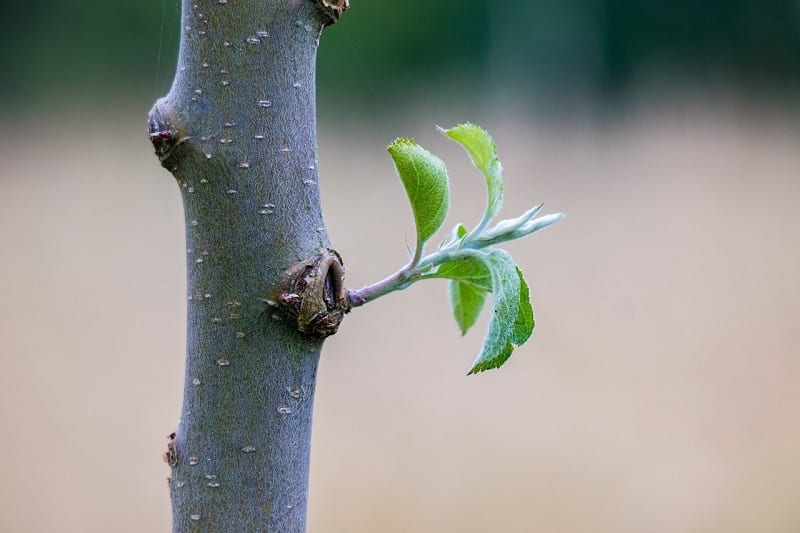
Caring for Your Orchard
Caring for the trees in your mini fruit orchard should be a fairly straightforward routine. You need to prune your trees regularly, removing dead branches in the summer after the initial cuttings.
Consult your local extension office for pruning advice for your selected fruit tree. Make sure you mulch your orchard to help maintain adequate moisture in the soil.
You will not need to routinely water the trees once they are well-established unless your orchard is growing under extremely dry conditions. You shouldn’t need to fertilize your orchard, either, unless you’re amending poor soil.
Conclusion
Growing a mini fruit orchard offers the joy of harvesting your own fresh fruit right in your backyard. Careful selection of tree varieties, strategic site placement, and proper tree spacing are essential for maximizing both fruit production and space efficiency. With regular care and maintenance, your mini fruit orchard can thrive, providing both beauty and bounty for years to come.
One of the best things about growing a mini-orchard of small trees is that you are likely to start harvesting fruit within three years of planting. Keep your fruit trees healthy by using our guide on preventing pests and diseases.



